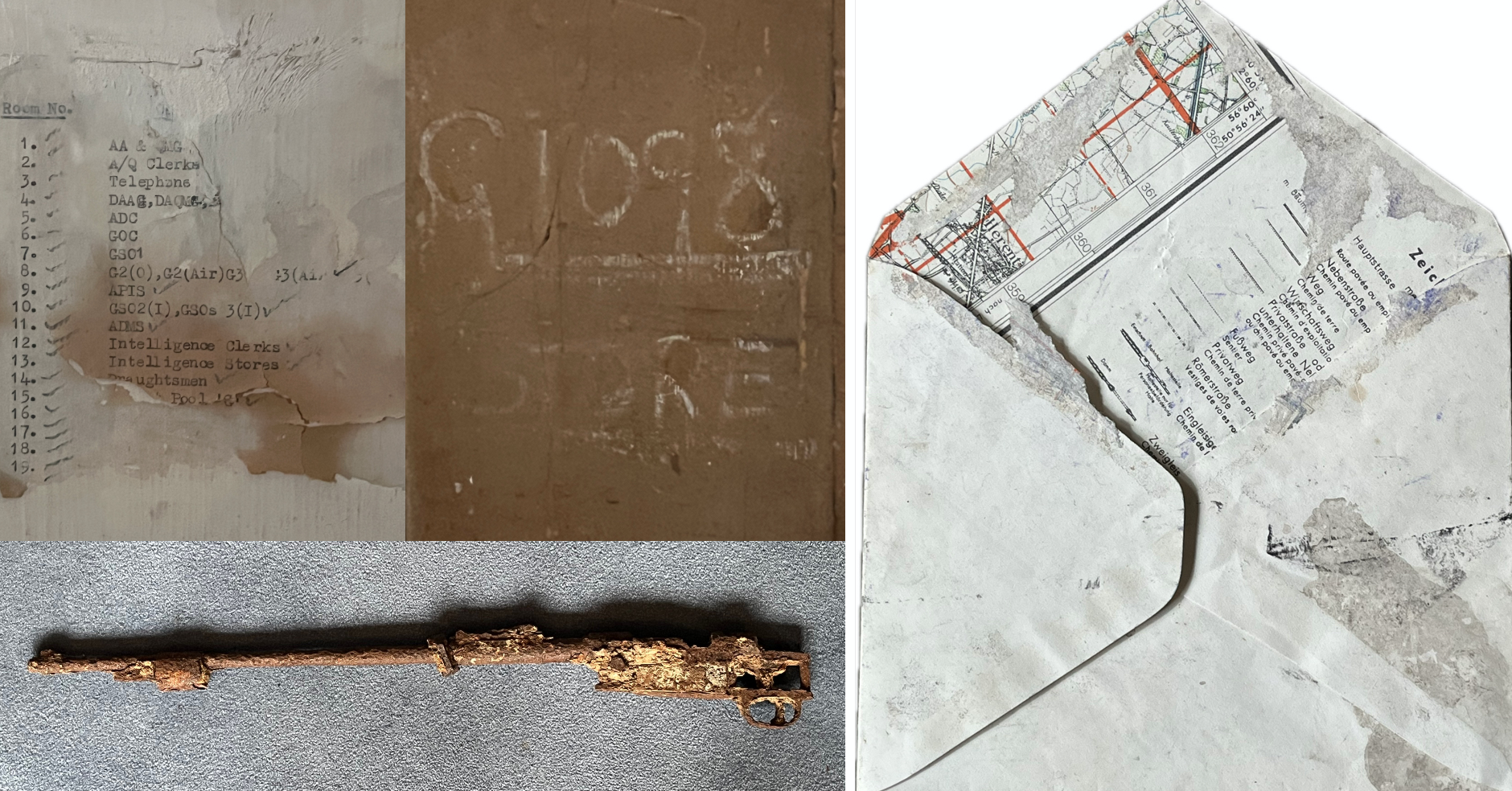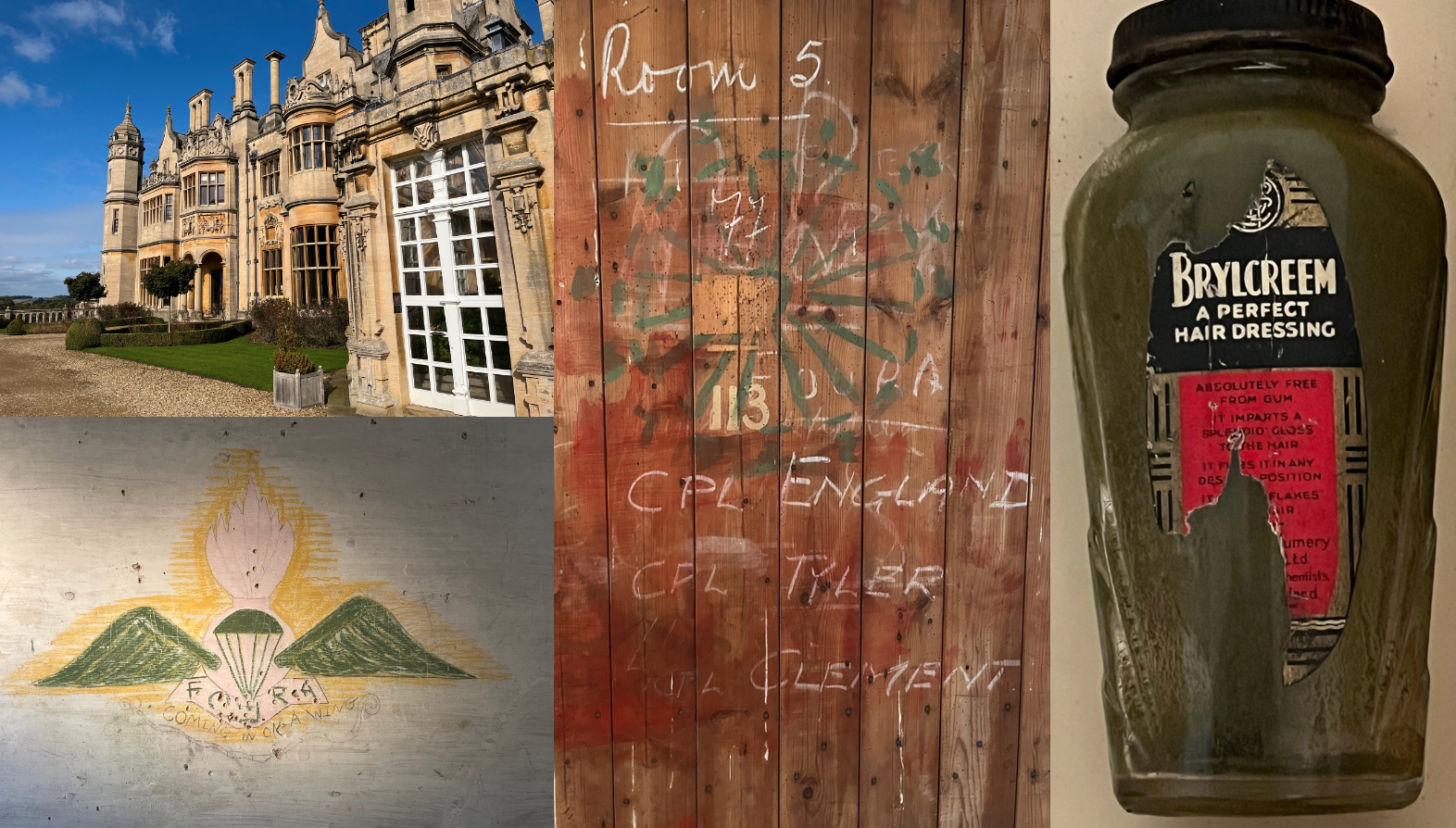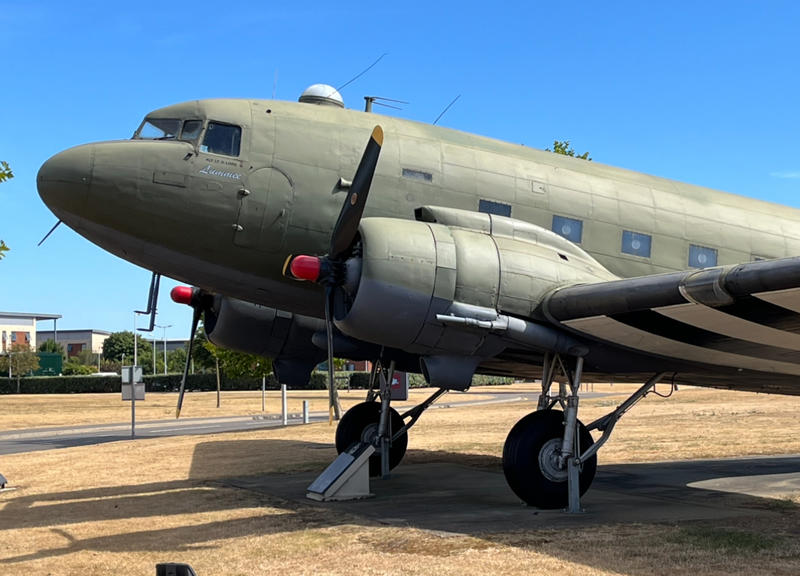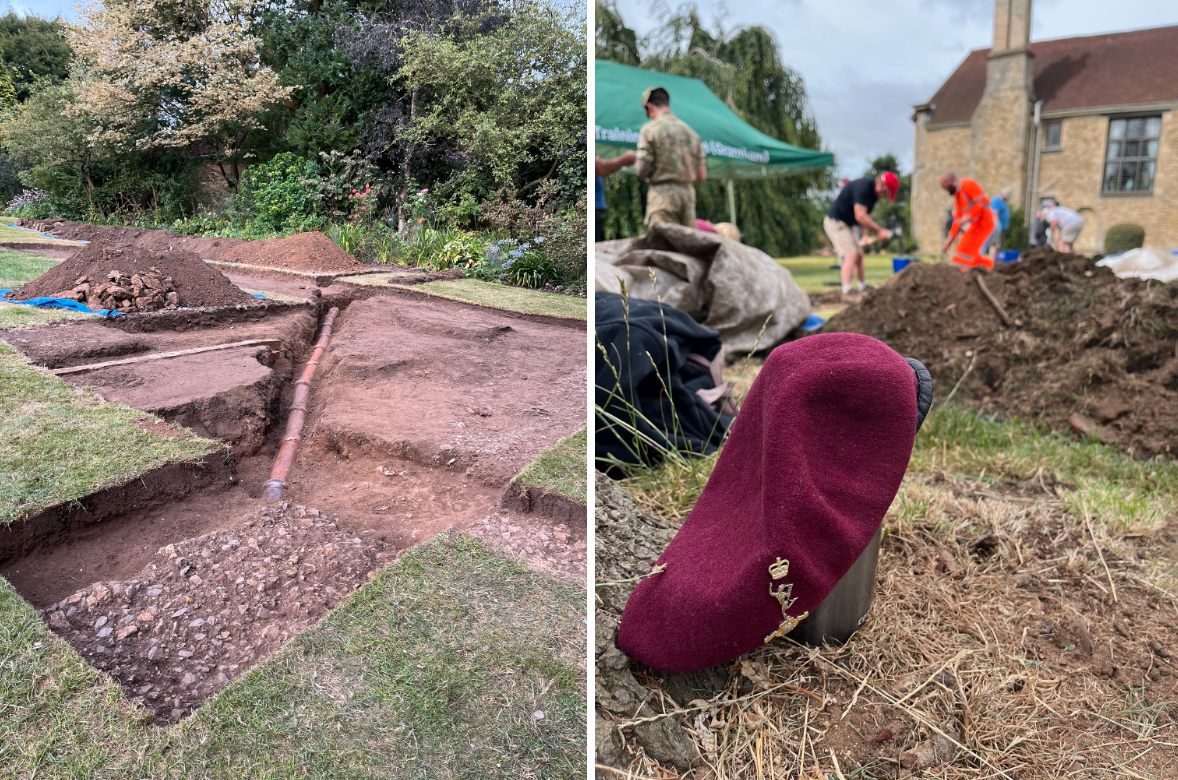Digging Market Garden Project
Digging Market Garden Project
Launched in 2024, Digging Market Garden is a community archaeology and heritage project. It is designed to investigate the material traces as well as social and personal memories associated with preparations for the airborne component of Operation Market Garden in South Lincolnshire during World War II.
Directed by Dr Tim Clack (University of Oxford) and Prof Carenza Lewis (University of Lincoln), the Digging Market Garden project is a collaboration with South Kesteven District Council (SKDC), the MOD’s Operation Nightingale and the charity Wings to the Past. Connecting the past and present, units from the RAF and British Army are also central participants.
Digging Market Garden works with local communities, military veterans and service personnel to realise well-being outcomes by investigating, recording and commemorating the remarkable airborne heritage of South Lincolnshire.
The first excavation is in Fulbeck, Lincolnshire, an historic cliff village at the heart of the British 1st Airborne Division’s planning and preparations for Operation Market Garden. As well as various headquarters, the village had significant billet sites throughout.

Fulbeck Manor (left), members of the project team on a site recce (top right) and a member of the Fane family and some “echoes” of the wartime
In September 1944, Operation Market Garden saw British, American and Polish airborne forces inserted by parachute and glider into occupied Holland with the aim of securing bridges and territory around the towns of Eindhoven, Nijmegen and Arnhem.
As one of the largest airborne operations in history, the plan, devised by Field Marshal Bernard Montgomery, held the prospect of accelerating the defeat of Hitler’s regime by circumventing the strongest of the German defences (the Siegfried Line) which protected the heartland of Germany beyond the Rhine.

Paratroopers jump into Holland at the start of Operation Market Garden
Operation Market Garden involved complex planning, intricate logistics, fierce fighting and heroic defences. However, whilst the plan was intended to avoid the casualties of a broad front approach into Germany, a series of strategic mistakes ensured it became a costly failure. The operation saw 17,000 Allied troops killed, wounded or captured. German casualty figures have proven harder to calculate although many estimate at least 9,000 losses.
The events of Market Garden have been captured in countless news reports, war diaries, historical accounts, documentaries and films. The Hollywood movie, “A Bridge Too Far” (1977) has, despite historical inaccuracies, perhaps been the most impactful in shaping current understandings of the events. Comparatively little is known, however, about the preparations and build-up to the operation, and archaeological methods have not previously been deployed to offer their insights.
During World War II, Lincolnshire became known as “Bomber County” because of the many Lancaster squadrons that flew from there. This moniker has endured to the present and, indeed, the Royal Air Force maintains a close connection with the county, with many present-day units based there, with the Royal Air Force College and Flying School at RAF Cranwell and Typhoon squadrons and Battle of Britain Memorial Flight at RAF Coningsby being perhaps the most well-known.
Less recognised today is that, in the latter stages of World War II, South Lincolnshire became “Airborne County”, with huge numbers of Allied troops stationed across the county in preparations and readiness for operations. With the exception of a pathfinder unit, for example, all of the parachute troops of the British 1st Airborne Division and Polish 1st Independent Parachute Brigade who flew to Arnhem in 1944 did so in American C-47 aircraft from the airfields of Barkston Health and Saltby in Lincolnshire, and Spanhoe in Northamptonshire. In addition, paratroopers and gliders of the US 82nd Airborne Division flew from the airfields of Fulbeck and Folkingham in Lincolnshire, as well as from airfields outside the county. In all, US aircraft flying from airfields in South Lincolnshire dropped over 8,600 paratroopers and towed over 3,000 glider troops to the landing zones in Holland for Operation Market Garden.
Digging Market Garden intends to “unearth” Airborne County. In its innovative and inclusive approach, it is collaborating with local communities, SKDC, RAF Cranwell, parts of the British Army’s 16 Air Assault Brigade, Operation Nightingale, Wings to the Past and a team of local historians to illuminate this important heritage. The project and partners are also involved in the development of an Airborne Forces Heritage Trail, a ground-breaking initiative to raise the profile of the wartime history of certain sites throughout South Lincolnshire.

Airborne heritage in Fulbeck. Clockwise from top left: exposed foundations and floor of a Nissen hut; inside of a concrete air raid shelter; and brick-built entrance to air raid shelter
In 2024, 80 years after events in Holland, Digging Market Garden is investigating a previously unexplored part of Operation Market Garden: the Lincolnshire-based preparations of the airborne component. Preliminary surveys, oral histories and archival work have indicated the presence of the remains of airfield and unit-related structures and buildings at a number of sites, including runways, roads, control towers, headquarters and offices, accommodation huts, messes, stores and air raid shelters.

Project artwork by Doug Farthing MBE, a veteran of The Parachute Regiment. Clockwise from top left: Fulbeck Manor with Nissen huts in background and troops unloading a vehicle in foreground; paratroopers checking equipment at Fulbeck Airfield before departing for Holland; C company, 2 Para at Drop Zone X; and an abstract piece entitled, “Put us down in Holland”
The pilot season of fieldwork took place at Fulbeck Manor in August 2024. With relevant permissions, Tim Clack and others in the team have also been able to visit various other project-related sites in Lincolnshire, including Harlaxton Manor, Fulbeck Hall, RAF Barkston Heath and Buckminster Gliding Club (formerly Saltby Airfield).

Material echoes from WWII at Fulbeck Hall. Clockwise from top left: military telephone directory on wall; chalk markings relating to military stores on door in cellar; envelope made from a repurposed map found under a floor board; and remains of a rifle found in the garden. Thanks to William Day for hosting the visit.

Material echoes from WWII at Harlaxton Manor. From left to right: Harlaxton Manor (top); emblem of the 1st Forward Airborne Observation Unit Royal Artillery drawn on room wall (bottom); room number, occupant names and dart board written/ drawn on room door; and empty bottle of Brylcreem. Thanks to Dr Holly Carter for hosting the visit.
Digging Market Garden will triangulate archaeological, oral historical and archival research. A complementary lane of research, for instance, involves the elicitation of first-hand and intergenerational memories relating to the World War II period at and around the sites. This will include interviewing people from the local community as well as families of airborne and air force veterans in the UK and overseas. Archival work is ongoing with various institutions and units, including 216 Parachute Signals Squadron based in Colchester which has close historic links to the area, particularly the village of Caythorpe.

Dakota aircraft outside Merville Barracks, Colchester, the current base of 16 Air Assault Brigade

Airborne troops boarding a plane for operations (left) and front cover of remembrance service held in Lincolnshire
after Operation Market Garden (right). From the archive of 216 Parachute Squadron Royal Signals
In 2024, 80 years after events in Holland, Digging Market Garden is investigating a previously unexplored part of Operation Market Garden: the Lincolnshire-based preparations of the airborne component. Preliminary surveys, oral histories and archival work have indicated the presence of the remains of airfield and unit-related structures and buildings at a number of sites, including runways, roads, control towers, headquarters and offices, accommodation huts, messes, stores and air raid shelters.
In August 2024, Digging Market Garden conducted its first excavations at the site of Fulbeck Manor, a late 16th-century building and seat of the Fane family, which was a hive of activity during World War II. Requestioned by the War Office, the Manor was used by a number of specialist units of the British 1st Airborne Division during 1944-45, including those of the Royal Army Ordnance Corps, Royal Electrical and Mechanical Engineers and Royal Army Service Corps. Major General Roy Urquhart, the Division Commander who led the British forces at Arnhem, was a regular visitor to the Manor.
The focus of the 2024 archaeological investigations was the suspected former sites of two Nissen huts on lawns immediately adjacent to the Manor. These did not appear on mapping from the period and their function was a mystery. Nonetheless, they are remembered by locals, including members of the Fane family who were children at the time.
The archaeological survey and excavation at Fulbeck Manor not only gave insight into the location, form and condition of these dimly remembered material remains from the period, but also provided tangible evidence for aspects of the daily routine, living and working conditions, training activities, and life of service personnel prior to their departure for combat. Finds included, for example, brick footings from the Nissen huts, drains and metalled pathways. Also found was ammunition (live, blanks and drill rounds), bits of soldiers’ uniform and kit, medicinal containers, and even parts from the engine of a jeep.
(In addition to the World War II finds, the excavation also unearthed stone walls associated with a hitherto unknown medieval manor as well as fragments of late 14th and 15th century pottery. Glazed 13th or 14th century roof tiles were also recovered).

Excavated WWII remains of brick footings, drain and metalled pathway (left) and members of the project team excavating, with airborne beret from one of the project’s British Army volunteers in foreground (right)




